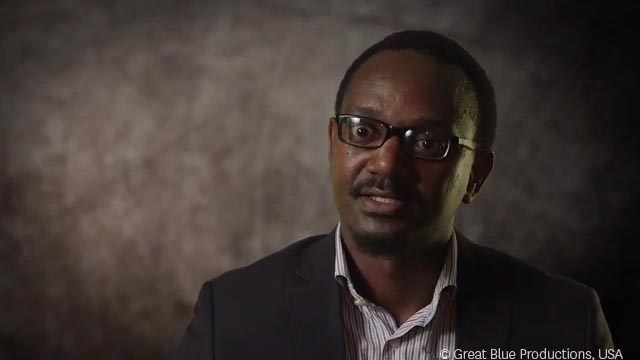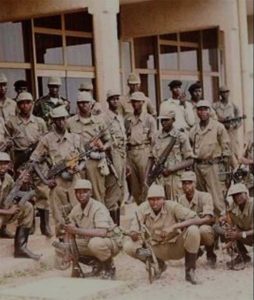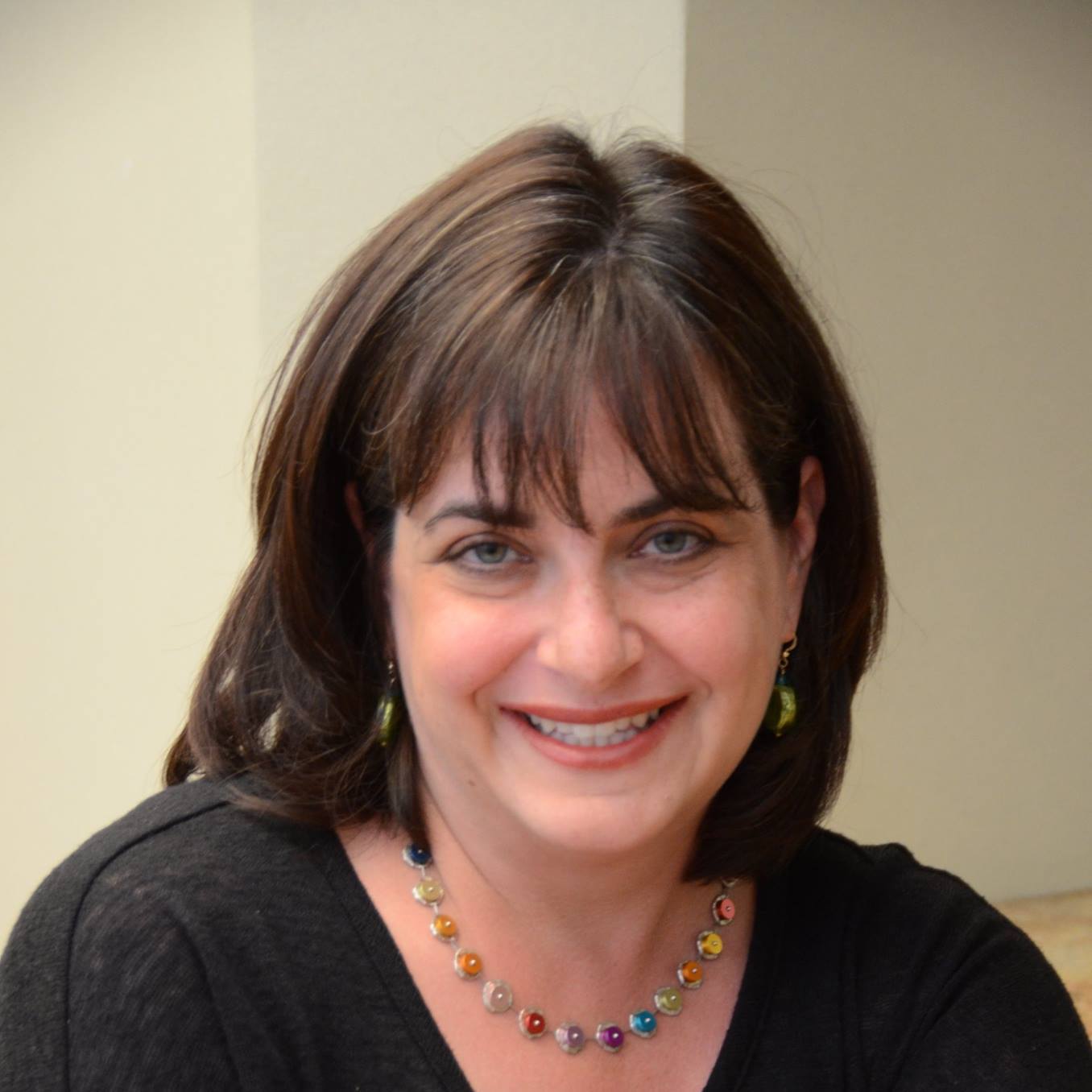Rwandan Rescuers and Those They Rescued Recall Trauma and Triumph

On July 4, 1994, Paul Rukesha was convinced the sun was shining differently than it had the day before.
Rukesha, then 16, had spent the previous three months eluding soldiers, militias, and Hutu neighbors who were rampaging across Rwanda looting, raping, and murdering minority ethnic Tutsis like himself. His father, his stepmother, his brother, and many other relatives had been killed and by July 4 Rukesha was starving, lice-ridden, and in despair. The day before, he had heard people fleeing and that morning, soldiers of the Rwandan Patriotic Army arrived at his hideout in the capital Kigali to tell Rukesha and those hiding with him that the RPA had captured the city—and that they were now safe.
“I was just looking at [the RPA soldiers], observing them, wondering what they were made of, if they were human, like us,” Rukesha said an interview recorded for The 600, a documentary film about an elite RPA unit. “I wanted to enjoy the moment, enjoy the new sun, because the sun beaming on us during the genocide was not the usual sun.”
He still sees that new sun every July 4, which in Rwanda is now celebrated as Kwibohora, or Liberation Day.
Rukesha’s testimony, along with six other interviews from The 600 documentary, was recently integrated into USC Shoah Foundation’s Visual History Archive, which now holds 135 indexed and searchable interviews connected to the Genocide Against the Tutsi Rwanda. The majority of these testimonies were collected by Aegis Trust and the Kigali Genocide Memorial, in partnership with USC Shoah Foundation. The seven new testimonies include the first accounts of Rwandan liberators to be added to the collection.
Richard Hall, the writer and producer of The 600, funded the integration of the interviews he conducted for his film—along with 11 new testimonies from the Kigali Genocide Memorial—through the Hall Family Foundation. He is currently working with USC Shoah Foundation to integrate more of the 70 testimonies he recorded for the film.
Hall, an Emmy-winning producer and son of entertainers Monty and Marilyn Hall, grew up in a home committed to preserving the memory of the Holocaust. He hopes his film, released in 2019, and the testimonies being integrated into the Visual History Archive, can help preserve the memory of the Rwanda genocide.
Hall’s wife is herself a Rwandan genocide survivor, and he first heard the story of the 600 members of an elite RPA unit from two of her uncles, who were RPA soldiers stationed in Kigali. The 600 soldiers had been sent to Kigali to monitor the installation of a new government as part of a historic peace agreement intended to end a civil war. But instead of signing the peace agreement, on April 7, 1994, government forces attacked the RPA peacekeepers and launched a brutal wave of massacres against the minority Tutsi population and Hutu moderates. Building on decades of government-sponsored anti-Tutsi propaganda and persecution, hundreds of thousands of Hutu soldiers, police, and civilians brandished machetes, grenades, and pistols against their neighbors.
 The film traces the 600 soldiers, many of whom were Tutsi exiles or refugees trained in guerrilla warfare in mountainous border regions, who were trapped in Kigali and for four days fought the 10,000-strong President’s Guard military unit to hold onto the parliament building, a stadium, and other key locations until the arrival of reinforcements. For the three months that followed, under the leadership of Gen. Paul Kagame, the RPA waged a military battle while at the same time diverting resources to rescue civilians. More than one million Tutsis and moderate Hutus were killed in the preplanned and well-organized genocide, which took place over a 100-day period.
The film traces the 600 soldiers, many of whom were Tutsi exiles or refugees trained in guerrilla warfare in mountainous border regions, who were trapped in Kigali and for four days fought the 10,000-strong President’s Guard military unit to hold onto the parliament building, a stadium, and other key locations until the arrival of reinforcements. For the three months that followed, under the leadership of Gen. Paul Kagame, the RPA waged a military battle while at the same time diverting resources to rescue civilians. More than one million Tutsis and moderate Hutus were killed in the preplanned and well-organized genocide, which took place over a 100-day period.
Rukesha, who now works for the Kigali Genocide Memorial, estimates that the RPA saved up to 10,000 people in Kigali alone.
Hall released the film on July 3, 2019 to coincide with the 25th anniversary of Liberation Day. Gen. Kagame, now president of Rwanda, attended the opening, and the film—which won numerous international awards—continues to be shown as part of annual Liberation Day celebrations.
“It was important to me that the film have only Rwandans speaking. No experts, no historians, no Westerners seeing it through a Western lens. Only rescuers and rescuees telling their stories,” Hall said.
Using interviews with soldiers and those they rescued, along with reenactments and archival photos and footage, Hall, along with co-producer Annette Uwizeye and director Laurent Basset, focused the narrative on a church, a stadium, and a school where dramatic, large-scale rescues occurred.
“I decided only to tell stories that had a complete circle—the rescuers talking about the rescues, and the people they rescued talking about the same experience as it happened to them,” Hall said.
In one thread, the film focuses on Theogene Kayitakire, a soldier who helped capture the Mount Rebero neighborhood in the hills surrounding Kigali, and the civilians he escorted back to the safety of Mount Rebero. Yvonne Umugwaneza, who was 14 at the time, recalled her emotions when she realized that the soldier knocking on her window was a member of the RPA. Yvonne’s testimony is one of those indexed in the Visual History Archive.
“My cousin and I were jumping and laughing and smiling and screaming, ‘we are saved!’” Yvonne said. “I was happy for two reasons. First, I was being saved from a machete. And second, I wasn’t going to be raped. At that particular moment, anything could happen, but I was not scared anymore.”
Yvonne’s mother, her aunts, and her cousins were saved. Her father and her siblings, along with dozens of relatives, were killed.
Edith Umugiraneza, who indexes Rwandan testimonies for USC Shoah Foundation and whose own survivor testimony is in the Visual History Archive, is inspired by the stories of rescue.
“Seeing survivors talking about their resilience brings back the humanity that the perpetrators were trying to destroy,” Umugiraneza said. “One warring side was trying its vilest to destroy lives, and the other was courageously striving to restore humanity by saving as many lives as possible.”
The 600 is available for streaming on Amazon Prime Video, Apple TV, and other streaming services.
Like this article? Get our e-newsletter.
Be the first to learn about new articles and personal stories like the one you've just read.
